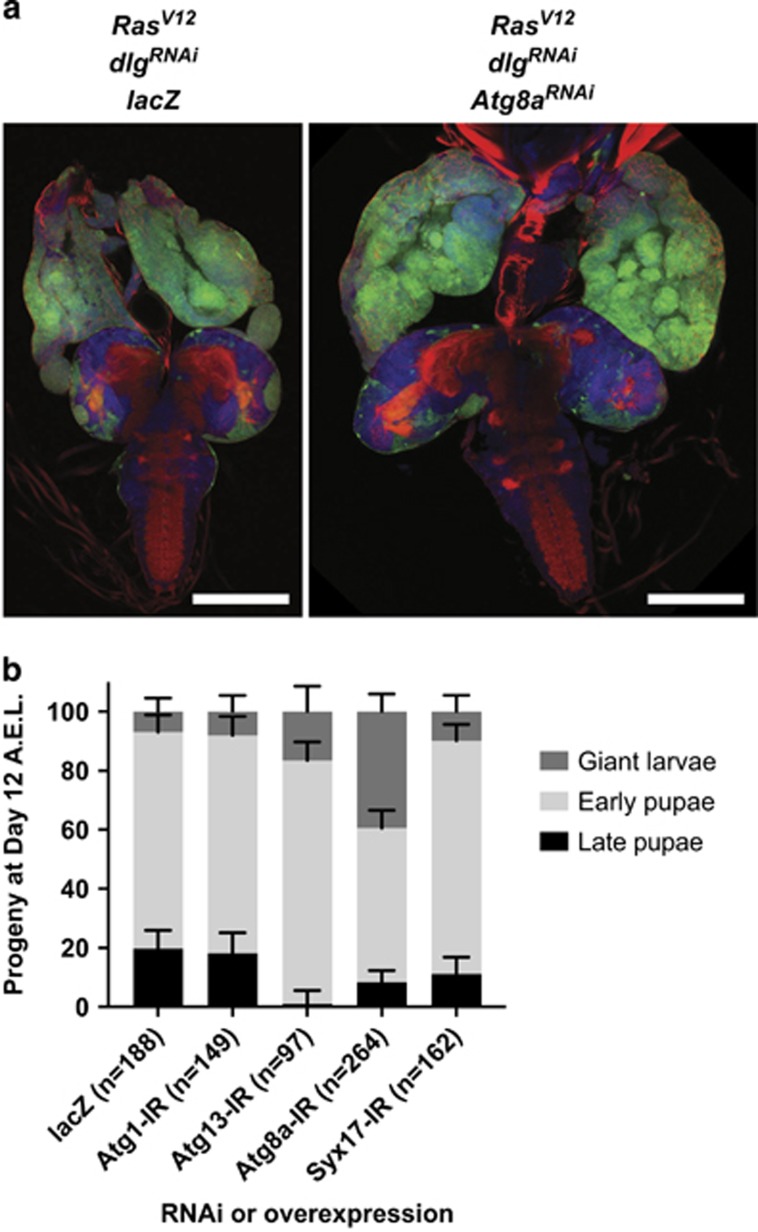Figure 4.
Blocking autophagy enhances polarity-impaired RasV12-driven epithelial tumours. (a) Eye-antennal imaginal discs of ey-FLP-out Act»RasV12 dlgRNAi lacZ (left) or ey-FLP-out Act»RasV12 dlgRNAi Atg8aRNAi (right) are shown attached to the brain and ventral nerve chord. (b) Autophagy inhibition at the induction (Atg13RNAi), elongation (Atg8aRNAi) or fusion to lysosome (Syx17RNAi) step of the pathway enhanced developmental delay in an ey-FLP-out Act»RasV12 dlgRNAi cooperative model of tumourigenesis. Inhibition of autophagy at the elongation step, using Atg8aRNAi, accentuated developmental delay, with nearly 40% of animals dying as giant larvae, and only 8% reaching a later pupal stage. Inhibiting autophagy at the autophagosome–lysosome fusion step, using Syx17RNAi, also delayed development of ey-FLP-out Act»GAL4 RasV12 dlgRNAi larvae, although not as strongly as Atg8aRNAi, with ~10% dying as giant larvae, and only 11% making it to the later pupal stage. Blocking the initiation step, using Atg13RNAi, markedly enhanced developmental delay, with only 1% of animals reaching the late pupae stage, and 16% dying as giant larvae. However, inhibiting the pathway at the same step, using Atg1RNAi, did not have any substantial effect on ey-FLP-out Act»GAL4 RasV12 dlgRNAi development. Error bars=95% confidence intervals.

